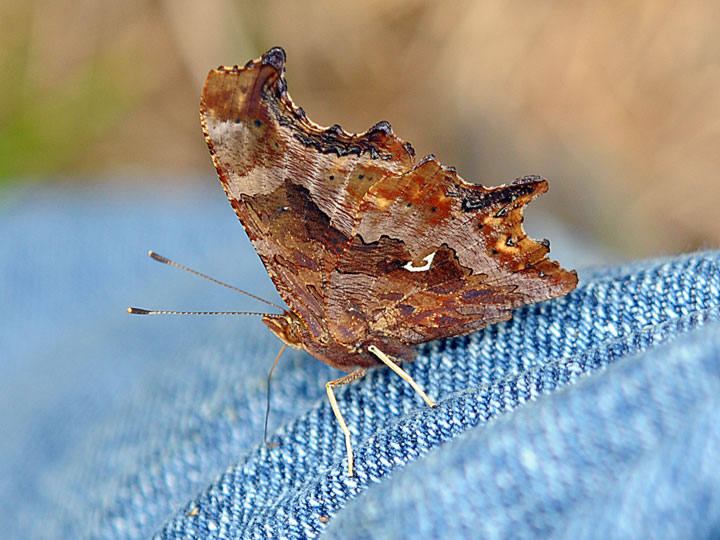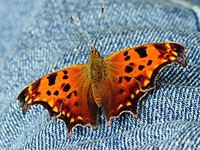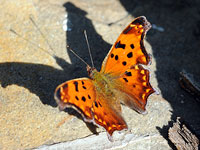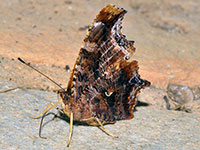
Comma Your first sight of a Comma butterfly is likely to be when it darts out at you from its perch on a tree or leaf when you are walking around near water in woodlands. This seeming aggression is a feint, though, and the Comma will soon retreat to a safe place where it will hang upside down with its underwings providing camouflage. The forewings of the Comma are orange with dark-brown patches. The hindwings are predominantly dark-brown in the Summer, but orange with yellow spots along the edges in the Fall and Spring. It is when they sit with their wings closed, however, that we can see why their wings are raggedy; they look remarkably like dead leaves with broken-pattern shades of brown all over the underside of their wings. The tell-tale sign of the Comma butterfly is the small white comma mark amongst the underside browns. The male sits disguised as a leaf to put off would-be predators, while he keeps his eyes open for passing females. The Commas have three broods per year, Spring, Summer, Fall, and the eggs are laid either in stacks or individually on the underside of leaves. The preference is for nettles for the caterpillars, but host plants also inlude elm, hackberry and hops. As adults they prefer eating sap or rotten fruit. |









